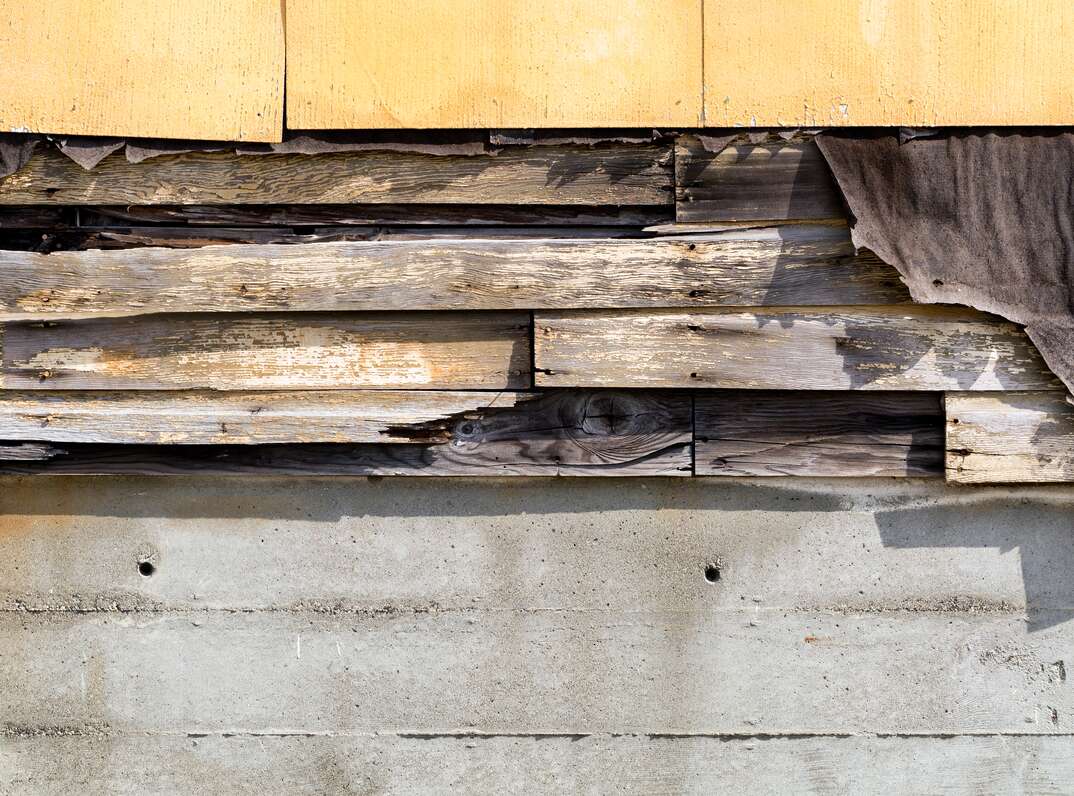What Do I Do If my Siding Is Damaged?

Vinyl siding protects your home's exterior while creating a beautiful aesthetic, but siding damage can ruin the effect. Before picking up the phone to call a professional, it's worth considering doing minor repairs yourself.
Read More Home Improvement Articles
Fixing your own siding can save you a lot of cash, but certain issues require expert help.
Types of Siding Damage
Many homeowners opt for vinyl siding because it's affordable and tough. However, even the sturdiest installation can sustain damage due to extreme weather, age or accidents. Here are the most common types of vinyl siding damage and how to fix them:
Cracks
Vinyl siding is relatively durable, but it can still crack under pressure. Hail, falling tree branches and sports balls are all common causes of cracked siding. Fortunately, cracks are relatively simple to repair yourself using specialized caulk or a patch kit.
Vinyl patch kits cost as little as $10 to $20 (CAD 14 to CAD 27) and are available online and from DIY stores. After cutting the patch to size and applying it, you'll need to paint it the same color as the rest of the siding to conceal the repair.
Holes
Holes are a particularly common vinyl siding problem because the material used to make the panels is thin. Therefore, sharp objects can easily puncture the panels. You can patch smaller holes similarly to cracks and paint over the repair to hide the joints.
Fading
Over time, UV rays from the sun can cause your vinyl siding to fade and spoil its aesthetic. Fading is one of the simplest types of vinyl siding damage to fix because you can simply repaint your siding to get it looking as good as new. Exterior paint for siding is inexpensive, costing $1 to $3 (CAD 1.37 to CAD 4.10) per square foot on average.
Moisture Damage
If you have a leak, moisture can get between your siding and your home's exterior and damage the building materials. Vinyl siding is resistant to water damage, but excessive moisture could cause the building materials to rot and encourage mold growth. Fix the leak as soon as possible if you know where the water's coming from to see if that solves the issue. If it doesn't, you'll probably need help from a professional.
Buckling
Sometimes, vinyl siding can buckle or warp as it expands and contracts due to temperature changes. This issue usually occurs because of incorrect installation, as professional contractors typically allow for slight movements when fitting the panels. You'll need to replace any warped boards, but it's also worth asking a professional to reinstall the siding to prevent the problem from occurring again.
More Related Articles:
- How Much Does a Home Inspection Cost?
- 4 Tips for Hiring a General Contractor for Your Next Remodeling Project
- Should You Hire a Contractor or a Handyman?
- 5 Things to Look For When You're Hiring an Electrician
- What to Look for When Hiring an Exterminator
Many types of vinyl siding damage are straightforward to repair yourself, providing the damage is relatively minor. Fixes such as repainting or applying patches are doable for homeowners with a bit of DIY knowledge, and you can even replace whole panels by removing the nails from the existing board and sliding in a new one. However, there are some situations when repairing siding damage is beyond the skills of an average homeowner.
When Should You Call an Expert to Repair Vinyl Siding?
It's best to call an expert to repair extensive siding damage affecting large areas of your home's exterior, especially if you notice moisture or pest issues. Leaving these problems to fester or attempting to deal with them yourself could lead to severe water damage or a major infestation.
Hiring a professional could also be a wise move if you believe your siding was incorrectly installed. Warped, buckled or noisy panels are all signs of incorrect installation. Experienced tradespeople can examine your siding to find the root of the issue and recommend the best way to fix it.
All CAD conversions are based on the exchange rate on the date of publication.
Elocal Editorial Content is for educational and entertainment purposes only. Editorial Content should not be used as a substitute for advice from a licensed professional in your state reviewing your issue. Systems, equipment, issues and circumstances vary. Follow the manufacturer's safety precautions. The opinions, beliefs and viewpoints expressed by the eLocal Editorial Team and other third-party content providers do not necessarily reflect the opinions, beliefs and viewpoints of eLocal or its affiliate companies. Use of the Blog is subject to the
Website Terms and Conditions.The eLocal Editorial Team operates independently of eLocal USA's marketing and sales decisions.



